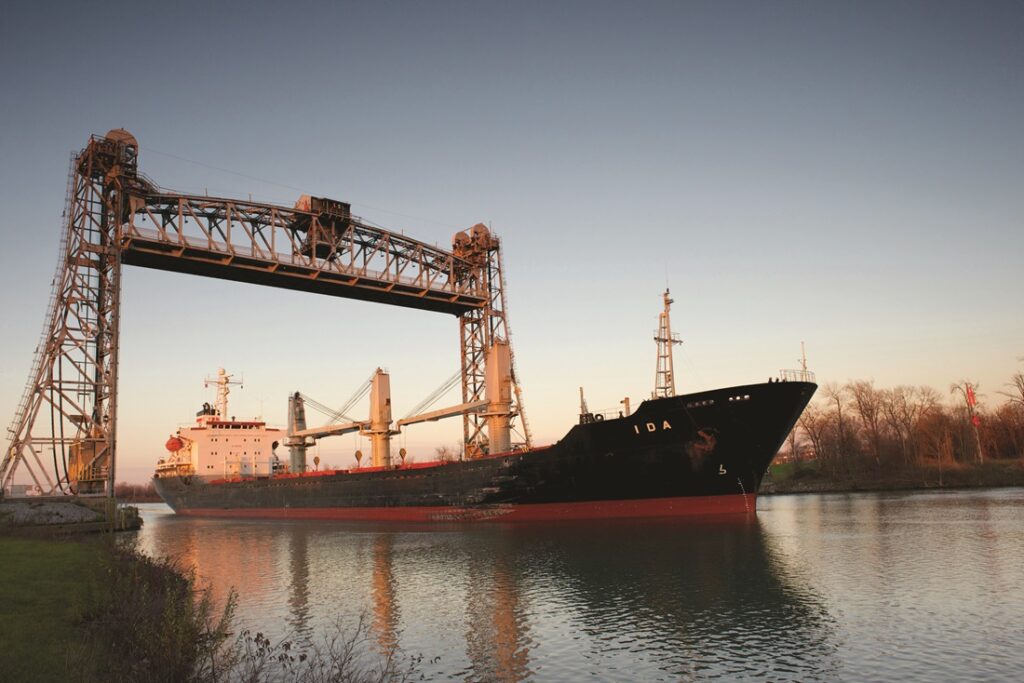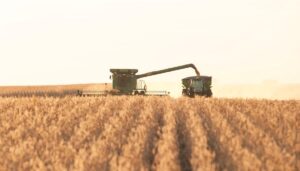Fertilizer in 2024
FACTORS AFFECTING FERTILIZER PRICES AND SUPPLY

SPURRED BY THE COVID-19 PANDEMIC, Russia’s invasion of Ukraine, and other disruptions, the fertilizer industry experienced significant volatility from 2020-2023. While supply and prices have since improved, significant volatility is still possible.
According to Casper Kaastra, chief executive officer of agriculture commodities trader Sollio Agriculture, the global nature of phosphorus, potassium, and nitrogen markets makes each product particularly vulnerable to a variety of factors beyond the control of domestic fertilizer suppliers. For growers, however, maintaining good relationships and communication with their input suppliers can go a long way in preventing fertilizer scarcity.
DIFFERENT PRODUCTS FROM DIFFERENT REGIONS
Speaking during the 2024 Ontario Agriculture Conference, Kaastra described what farmers in Eastern Canada could face in the fertilizer trade, such as geopolitics, weather, government policies, and other factors that continue to affect what is often a just-in-time supply system. Understanding what could happen, however, relies on knowing some of the characteristics of the fertilizer trade globally.
Fertilizers are bulk products that require significant logistical planning to move from place to place, with certain regions dominating production. Western Canada, for example, is a source of potash for farmers both in and outside Canada, while Russia produces a significant portion of the world’s nitrogen. Conversely, China produces and exports significant quantities of phosphorus — but its use of phosphorus is also quite high, which could lead to restrictions on exports and lower supplies globally. The nature of transport itself is a factor, with railways and ships offering different pros and cons.
“Because fertilizer is sourced from so many regions around the world… we need to understand that global picture,” says Kaastra. “In its entirety, Canada is a slight net importer of nitrogen requirements. Particularly in Eastern Canada, we rely on 100 per cent of our phosphate requirements from outside sources.”
MARITIME SHIPPING PROS AND CONS
Kaastra adds Eastern Canada has an advantage in that most fertilizers arrive via ship. This allows farmers and retailers to access product from many different regions of the world. But there are risks — particularly in shipment timing.
To enter and navigate the St. Lawrence Seaway, for example, a certain amount of bulk product has to be strategically offloaded from fertilizer vessels. Delays at the point of origin and the time it takes to offload product compound into further delays as the vessel passes through the seaway system.
For example, a shipment meant to arrive in Southern Ontario on November 7 might arrive 20 days late for such reasons. Such a delay in the latter part of the year might not be a big deal. But the same situation in spring, when demand for fertilizer is immediate and significant, could be very troubling for Ontario farmers.
Weather further compounds the challenge of ensuring enough product reaches end destinations on time. The madder the spring rush, the harder it is to ensure adequate supply.
“That lack of clarity, none of us can plan for that. Having a good idea of what the intended quantity is before the season hits helps quite a bit,” says Kaastra. He says companies like Sollio rely heavily on the relationships between farmers and agriculture retailers to provide accurate information on what’s needed, when, and in what quantity.
OTHER SIGNIFICANT FACTORS
Kaastra identified a range of additional factors affecting supply and fertilizer prices. They include, but are not limited to:
Geopolitics — something which Kaastra says carries a “very big stick” in terms of the impact it has on global markets, but which is very difficult to plan for. Israel’s war against Hamas, for example, might not be affecting the country’s output of potash and phosphate, but the raids being conducted by Yemeni Houthi insurgents against ships in the Red Sea are forcing vessels moving Israeli product to take longer alternative routes.
Government policy — a factor that can result from domestic issues and geopolitics. For example, Chinese export bans on urea are what Kaastra calls “an old story” rooted in the country’s own agricultural production requirements. Conversely, the Canadian government’s tariff on Russian nitrogen —one of many actions taken against Russia for its full-scale war against the Ukrainian people and state — has forced fertilizer suppliers to source product from unlikely sources, such as Turkmenistan.
Cost of production — particularly regarding energy and the price of natural gas. Fertilizer production is very energy-intensive, and large spikes in the cost of that energy (if not a lack of adequate energy source altogether) can lead to drops in production, translating to a tighter global supply and higher prices.
LOOKING AHEAD
Kaastra says there are trends to watch despite considerable uncertainty. The move to lower- cost fertilizer production and greater self- sufficiency in fertilizer production in Eastern Canada will be a factor eventually. However, dramatic changes in the short term are not anticipated. The continued emphasis on maximizing use efficiency on the farm is another, as is the growing use of fertilizer technologies like volatilization inhibitors and precision management equipment.
Kaastra reiterates maintaining a supply of fertilizers adequate for the needs of Eastern Canadian farmers relies on communication. Knowing how much will be required thanks to proactive dialogue, and planning between agriculture retailers and their farm customers.
“Nobody is bringing in 250 000 tons on spec,” says Kaastra.
Fertilizer Realities: Before the field, plus 65 more Ontario Agricultural Conference sessions, are available to view on-demand until March 31 at www.ontarioagconference.ca. •




















